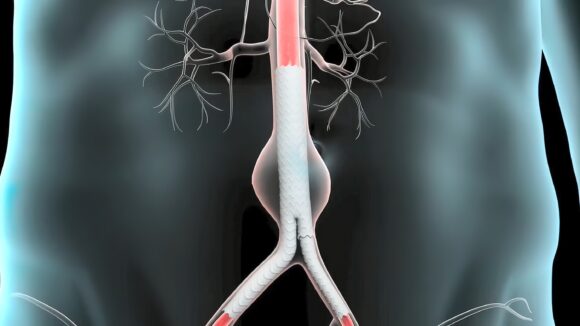The two-year statute of limitations for medical malpractice death claims applies even if the medical records available obscured the legal cause of death, the Pennsylvania Supreme Court ruled Monday.
In a 3-2 decision, the high court restored a trial court ruling that dismissed a lawsuit filed by Linda Reibenstein that alleged a physician failed to properly treat an aortic aneurysm that ruptured and killed her mother, Mary Ann Whitman.
The majority opinion says that while the statute of limitations in the state’s malpractice statute can be tolled if there is an affirmative misrepresentation or fraudulent concealment of the cause of death, in Whitman’s case the “medical cause” of death was never disputed.
The court rejected Reibenstein’s argument that the statute of limitations clock did not start running until she learned the “legal cause” of her mother’s death: A radiologist testified in a deposition years later that he had warned Whitman’s doctor that he had detected an aortic aneurysm, but the image quality was poor and he could not tell if it was in imminent danger of rupturing.
The Supreme Court majority said state lawmakers, when adopting the Medical Care Availability and Reduction of Error Act in 2002, “did not intend to guarantee that all of the information necessary to sustain a claim will be gathered in the limitations period.”
“At some point the clock must run out, lest health care providers remain subject to liability exposure indefinitely, with the prospect of a trial marred by the death or diminished memory of material witnesses or the loss of critical evidence,” the opinion says.

Reibenstein’s attorney, Jon R. Perry in Pittsburgh, said the high court’s opinion imposes an impossible burden on plaintiffs who lose loved ones because of medical errors.
“I think the Supreme Court’s opinion ignores the reality of litigation,” he said. “To get all this done within a two-year period and decide who should be sued; court’s don’t favor pre-complaint discovery. It’s rarely granted.”
Whitman sought treatment from Dr. Patrick D. Conaboy on April 12, 2010 for a cough, fever and low back pain. Conaboy ordered an ultrasound scan of Whitman’s abdomen.
Dr. Charles Barax, a radiologist, identified a “poorly visualized aortic aneurysm.” Conaboy scheduled Whitman to meet with a vascular surgeon on May 10, 2010.
The aneurysm ruptured on April 28, killing Whitman. The death certificate identifies the ruptured aneurysm as the cause of death.
Reibenstein filed a lawsuit against the radiologist, Barax, in April 2011, alleging that he had failed to recognize the urgency of Whitman’s medical condition. Perry said he was not able to depose Barax until years after the statute of limitations to file a malpractice action against Conaboy had passed.
Barax testified that he had told Conaboy that because of the “poor visualization” of the ultrasound scan, he was unable to determine if the aneurysm was rupturing or bleeding. He said he warned Conaboy that he was concerned about a potential rupture.
In March 2016, Reibenstein filed a new lawsuit against Conaboy. The doctor sought summary judgment because the statute of limitations for wrongful death malpractice claims had long since passed.
The Lackawanna County Court of Common Pleas initially refused to dismiss the lawsuit, but on reconsideration ruled that Reibenstein had not presented any evidence of “affirmative misrepresentation or fraudulent concealment” that would toll the statute of limitations and granted summary judgment in favor of the defendant.
On appeal, the Pennsylvania Superior Court overturned the decision and reinstated the lawsuit. The appellate court ruled that the malpractice statute was ambiguous and should be interpreted to protect a plaintiff’s recovery of fair compensation in instances where a medical provider hides an action that is directly related to the patient’s cause of death. Conaboy appealed.
The Supreme Court majority said that the the statute that allows the limitations period to be tolled for fraudulent concealment should be understood narrowly to encompass only the accuracy of the medical cause of death noted on the certificate of death. The opinion noted that the state’s vital statistics law and various county codes use the medical dictionary definition of cause of death. Neither statutes nor common sense suggest that medical physicians, who determine cause of death, are qualified to speak to the “legal” cause of death.
Perry, naturally, said he prefers the Superior Court’s ruling that the statue of limitations had been tolled. He said the Supreme Court’s majority opinion does not even address the fraud that was uncovered during discovery in Reibenstein’s case.
Perry said Conaboy claimed he had no reason to believe that his patient was in imminent danger, while Barax testified that he warned Conaboy that he could not tell if the aneurysm was about to burst.
“The defendant didn’t create an accurate medical record and one or both doctors did not tell the truth under oath,” Perry said.
Attorney James A. Doherty, who represented Conaboy, did not return a call from the Claims Journal on Tuesday.
Top photo: An abdominal aortic aneurysm occurs when a lower portion of the body’s main artery (aorta) becomes weakened and bulges. Stock photo.
Was this article valuable?
Here are more articles you may enjoy.


 Billionaire NFL Owner Suing Over Billboards Near His SoFi Stadium
Billionaire NFL Owner Suing Over Billboards Near His SoFi Stadium  Palantir Poaching Suit Called ‘Scare’ Tactic by Ex-Employees
Palantir Poaching Suit Called ‘Scare’ Tactic by Ex-Employees  California Governor Seeks $200M to Replace EV Tax Credits Cut by Trump
California Governor Seeks $200M to Replace EV Tax Credits Cut by Trump  JPMorgan Wins Gender Pay Gap Dispute Against London Analyst
JPMorgan Wins Gender Pay Gap Dispute Against London Analyst 